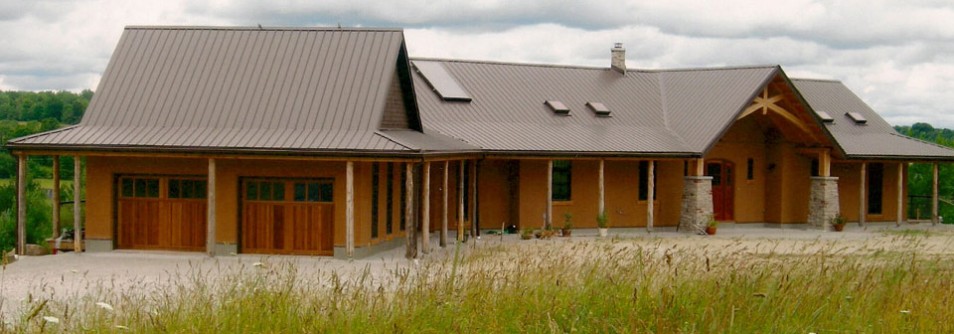
John Bleasby
How ‘alternative’ building differs from ‘green’ building… and why it matters
Canadian ContractorBen Polley's Evolve Builders Group is more than just 'green.' Green is becoming increasingly mainstream. 'Alternative' opens up a whole new vista of business opportunities...
Ben Polley has been in the home building industry for 17 years, initially as a sub-contractor providing unique green building skills and materials. In 2006, Ben and business partner Chris Vander Hout co-founded Evolve Builders Group, an integrated team of planners, educators, researchers and artisans based in Guelph, Ontario. Evolve’s projects, and those of its subsidiary companies Harvest Homes and Fermata, showcase many energy-efficient, health-friendly materials and techniques destined to become mainstream tomorrow, thus capturing the attention of national media and environmental experts from the world of green construction.
However, as John Bleasby learned, staying ahead of the innovation curve is one the major challenges for Ben and his team.

Ben Polley, co-founder of Evolve Builders Group
Evolve’s design and construction concepts are unique in their approach to health, energy and the environment. What is the term you use to describe your approach?
If I had to use a single word, it would be ‘Alternative’ builders. Our intention is to be more all-encompassing than the term Green, taking it to a point where it could be termed even ‘Natural’ building… straw bale construction, adobe floors, earthen ovens. ‘Green’ building is a term so embraced now by conventional builders that it doesn’t do enough to differentiate ourselves.
You’ve indicated that techniques and materials once considered ‘way out there’ are increasingly part of the mainstream today.
Several years ago, we would joke to each other that we didn’t know the building code because the code was so distantly behind our own processes and details. As an example, we didn’t know the code required for insulation because we weren’t ever going to drift to that low a level. Today, the codes for insulation are within a small margin of what we’ve been providing historically. As a result, we’re bumping up our own levels to deliver the same incrementally higher levels.

This handsome timber frame house has many of Evolve’s favoured features, such as straw bale exterior walls, solar thermal collectors and a rain water harvesting system.
Have consumer attitudes evolved over time?
Yes. For example, 15 years ago I found myself having to seriously educate people on triple-glazed windows or bamboo flooring. Once educated, we would have to sell them. Now I find there is a much greater understanding and awareness of building materials and finishes in general, somewhat coincidental with the overall knowledge and interest in the issue of climate change, or at the very least the home energy bill. As a result we are often asked to provide things like triple-glazed windows without question. Today it’s more a question of us providing context in terms of the overall building envelope.
Is the cost-benefit discussion becoming easier as a result?
It usually starts out as a philosophical discussion. That’s why people approach us, because our philosophy and values are aligned with their own. But ultimately it still comes down to dollars and cents for everyone at some point. There are some who are prepared to spend whatever for the greater good, but the rest, like most of us, have to consider the best returns.
Will Natural Resource Canada’s ecoENERGY Innovation Initiative regarding Zero Net Energy (ZNE) homes impact volume house producers going forward?
I hope it will be meaningful and long-lasting. However, in the absence of government support, I doubt you would see those builders involved. So the regulators are in fact pulling the builders along. What I do think is really smart about the initiative is the pre-condition that the builders have to market these homes for what they are. It’s my hope that this marketing will develop increased consumer interest, evolve the language of home building, and enhance consumer expectations.
How will this impact your company?
In means we in turn have to keep moving along and stay ahead of that curve. We’re already moving proactively to make our houses passive-certified for a less mechanised method of delivery than ZNE homes, but doing so with our alternative or natural building methods and materials that are less prone to competition.
Where will your new ideas come from?
Last year, I attended an international trade show in Europe for environmental building. I saw new initiatives and products close to market that we’ve never heard of. We now maintain connections overseas to be in a position to have first access when they come to market in order to generate volumes right away that will make them affordable for our clients.
follow John on Twitter 
@john_bleasby

Leave a Reply